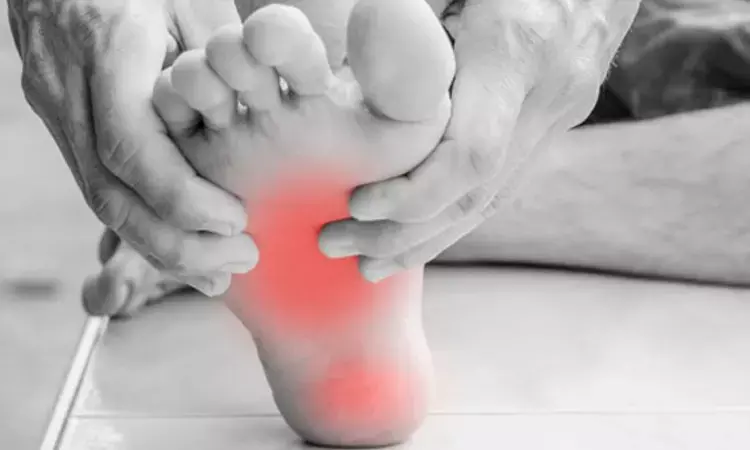- Home
- Medical news & Guidelines
- Anesthesiology
- Cardiology and CTVS
- Critical Care
- Dentistry
- Dermatology
- Diabetes and Endocrinology
- ENT
- Gastroenterology
- Medicine
- Nephrology
- Neurology
- Obstretics-Gynaecology
- Oncology
- Ophthalmology
- Orthopaedics
- Pediatrics-Neonatology
- Psychiatry
- Pulmonology
- Radiology
- Surgery
- Urology
- Laboratory Medicine
- Diet
- Nursing
- Paramedical
- Physiotherapy
- Health news
- Fact Check
- Bone Health Fact Check
- Brain Health Fact Check
- Cancer Related Fact Check
- Child Care Fact Check
- Dental and oral health fact check
- Diabetes and metabolic health fact check
- Diet and Nutrition Fact Check
- Eye and ENT Care Fact Check
- Fitness fact check
- Gut health fact check
- Heart health fact check
- Kidney health fact check
- Medical education fact check
- Men's health fact check
- Respiratory fact check
- Skin and hair care fact check
- Vaccine and Immunization fact check
- Women's health fact check
- AYUSH
- State News
- Andaman and Nicobar Islands
- Andhra Pradesh
- Arunachal Pradesh
- Assam
- Bihar
- Chandigarh
- Chattisgarh
- Dadra and Nagar Haveli
- Daman and Diu
- Delhi
- Goa
- Gujarat
- Haryana
- Himachal Pradesh
- Jammu & Kashmir
- Jharkhand
- Karnataka
- Kerala
- Ladakh
- Lakshadweep
- Madhya Pradesh
- Maharashtra
- Manipur
- Meghalaya
- Mizoram
- Nagaland
- Odisha
- Puducherry
- Punjab
- Rajasthan
- Sikkim
- Tamil Nadu
- Telangana
- Tripura
- Uttar Pradesh
- Uttrakhand
- West Bengal
- Medical Education
- Industry
Persistent midfoot pain linked to under-recognized prevalence of osteoarthritis: Study

UK: In individuals with persistent pain in the midfoot region but no signs of osteoarthritis (OA) on x-ray, MRI findings may suggest an under-recognized prevalence of OA, particularly in the 2nd and 3rd cuneiform-metatarsal joints, states study results published in the Arthritis Care and Research. Joint abnormalities were not strongly related to under-recognized pain or foot-related disability.
Foot pain is a relatively common and frequently encountered symptom in primary care. Osteoarthritis (OA) is likely to be one underlying cause of foot pain. Foot OA has been identified as an important contributor to the overall burden of OA, affecting 1 in 6 adults aged over 50. Midfoot OA is the most disabling form of foot OA, resulting in persistent pain, and difficulty walking and carrying out daily activities. Plain x-ray has been the base for diagnosing midfoot OA but magnetic resonance imaging (MRI) has greatly expanded the understanding of OA. MRI allows assessment of bone and soft tissue pathologies, and structural changes can be visualized before they become apparent on x-ray. MRI findings have identified a previously unrecognized prevalence of bone marrow lesions (BMLs) in people with midfoot pain but no x-ray signs of OA, yet little is known about the type and extent of MRI-detected joint changes.
John B., University of Leeds, UK, and colleagues conducted a cross-sectional study to compare MRI-detected structural abnormalities in people with symptomatic midfoot OA, persistent midfoot pain, and asymptomatic controls, and to explore the association between MRI features, pain, and foot-related disability.
Researchers enrolled 107 adults consisting of 50 patients with symptomatic and radiographically confirmed midfoot OA, 22 adults with persistent midfoot pain but the absence of radiographic OA, and 35 asymptomatic adults. All underwent 3T MRI of the midfoot and clinical assessment. MRIs were read for the presence and severity of abnormalities (bone marrow lesions (BMLs), subchondral cysts, osteophytes, joint space narrowing (JSN), effusion-synovitis, tenosynovitis, and enthesopathy). Pain and foot-related disability were assessed.
Key findings of the study,
• The severity of BMLs in the midfoot was greater in people with midfoot pain and no x-ray signs of OA compared to controls (p = 0.007), with a pattern of involvement in the cuneiform-metatarsal joints similar to those with midfoot OA.
• In univariable models, BMLs, JSN, and subchondral cysts were positively associated with pain (p <0.01).
• In multivariable models, MRI abnormalities were not associated with pain and disability when adjusted for covariates.
The authors conclude that structural abnormalities of OA not visible on plain-film x-rays, such as BMLs, are associated with persistent midfoot pain in people without radiographic OA, as well as symptomatic, radiographic OA.BML patterns have been found to be consistent with previously recognized sites of elevated mechanical loading. Also, Joint abnormalities are not strongly associated with pain or foot-related disability.
Reference:
John B. Arnold PhD,Jill Halstead PhD FFPM(Glas) RCPS,Carmen Martín-Hervás MD PhD,Andrew J. Grainger BM BS FRCR FRCP,Anne-Maree Keenan PhD FFPM RCPS(Glas) First published: 19 May 2022 https://doi.org/10.1002/acr.24955
BDS
Dr. Hiral patel (BDS) has completed BDS from Gujarat University, Baroda. She has worked in private dental steup for 8years and is currently a consulting general dentist in mumbai. She has recently completed her advanced PG diploma in clinical research and pharmacovigilance. She is passionate about writing and loves to read, analyses and write informative medical content for readers. She can be contacted at editorial@medicaldialogues.in.
Dr Kamal Kant Kohli-MBBS, DTCD- a chest specialist with more than 30 years of practice and a flair for writing clinical articles, Dr Kamal Kant Kohli joined Medical Dialogues as a Chief Editor of Medical News. Besides writing articles, as an editor, he proofreads and verifies all the medical content published on Medical Dialogues including those coming from journals, studies,medical conferences,guidelines etc. Email: drkohli@medicaldialogues.in. Contact no. 011-43720751


